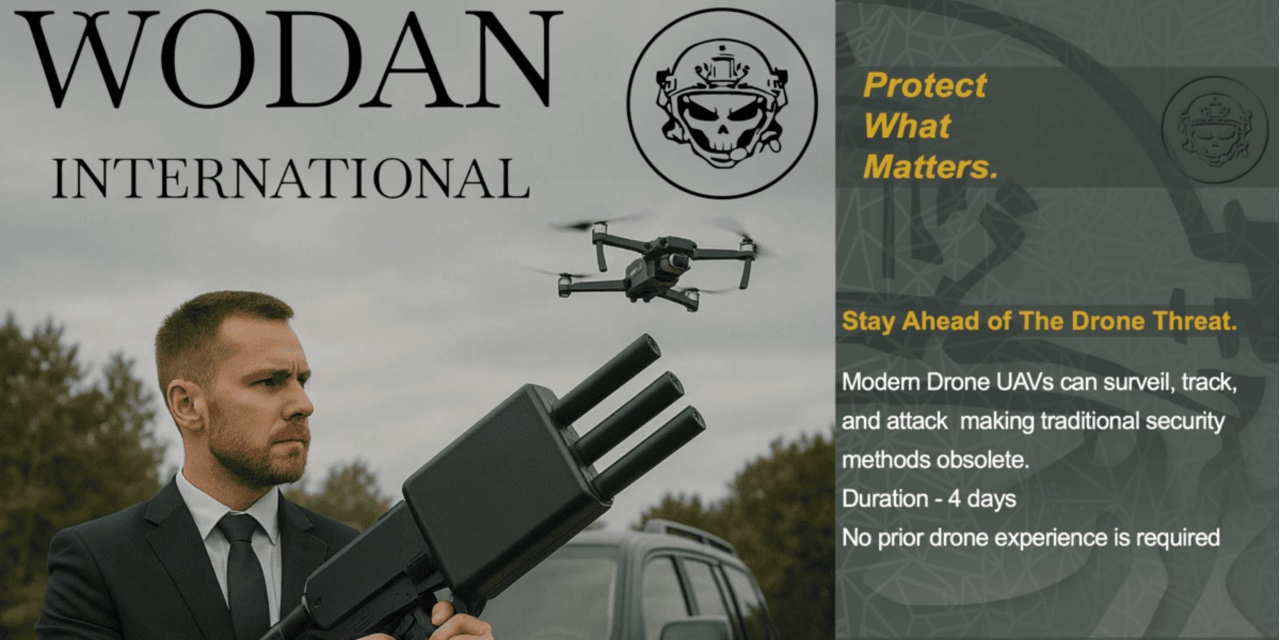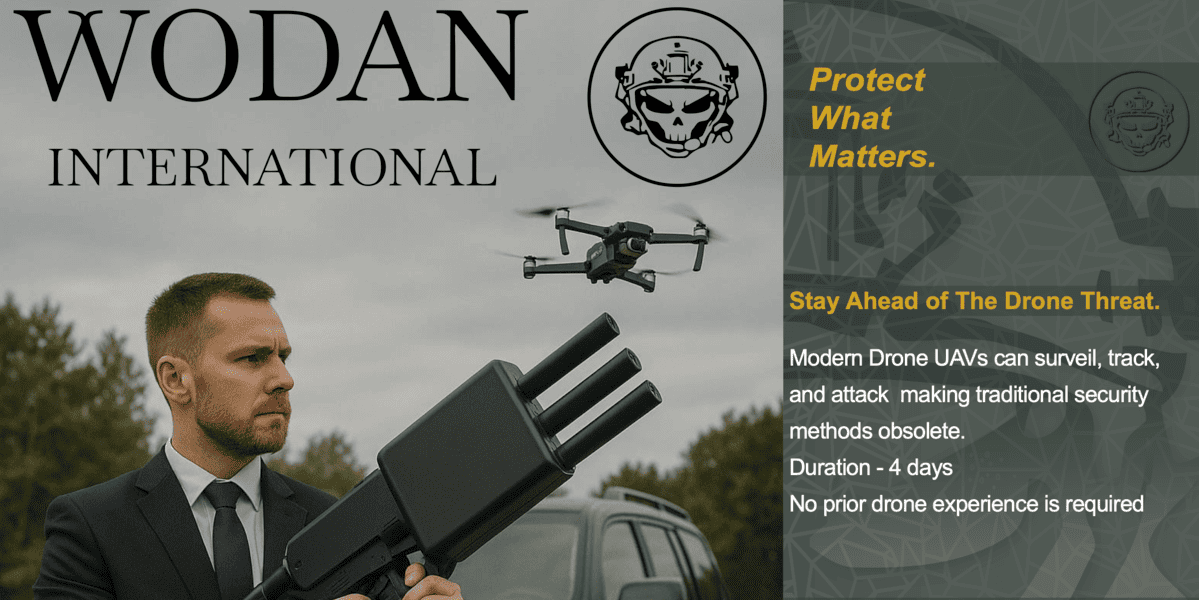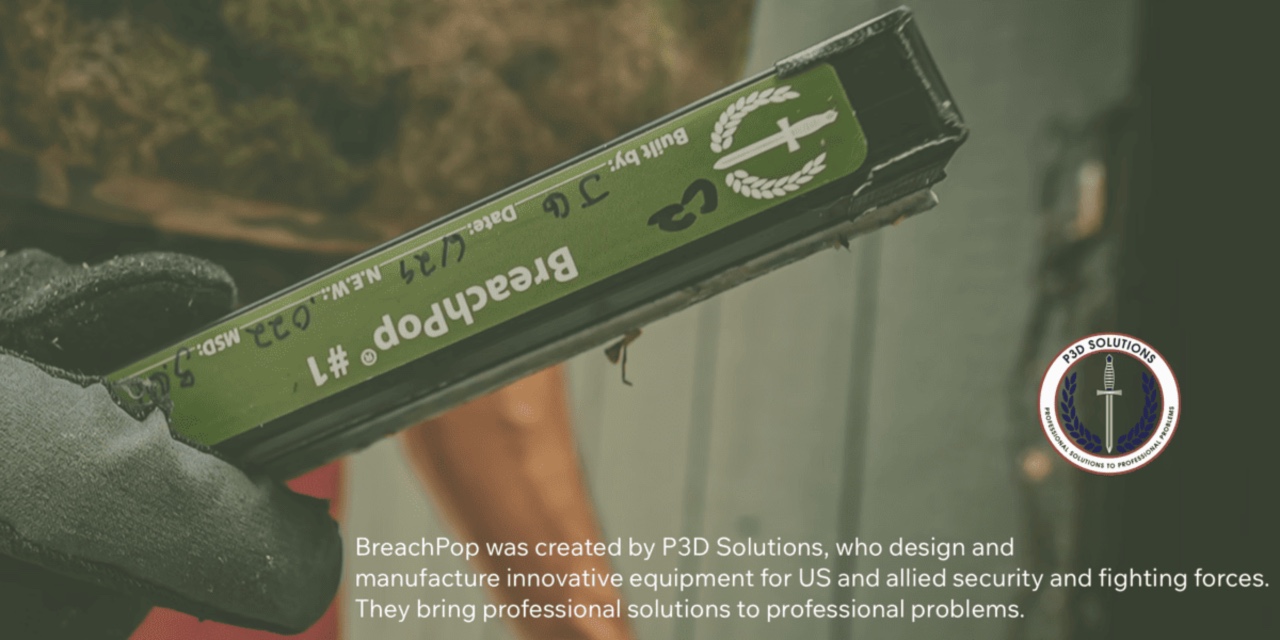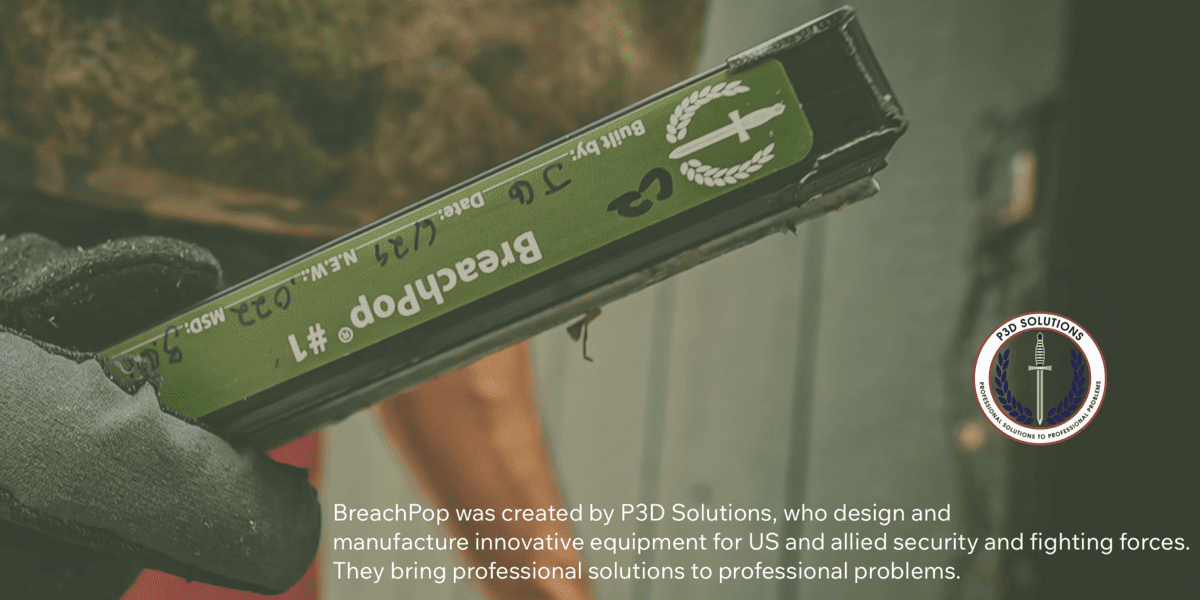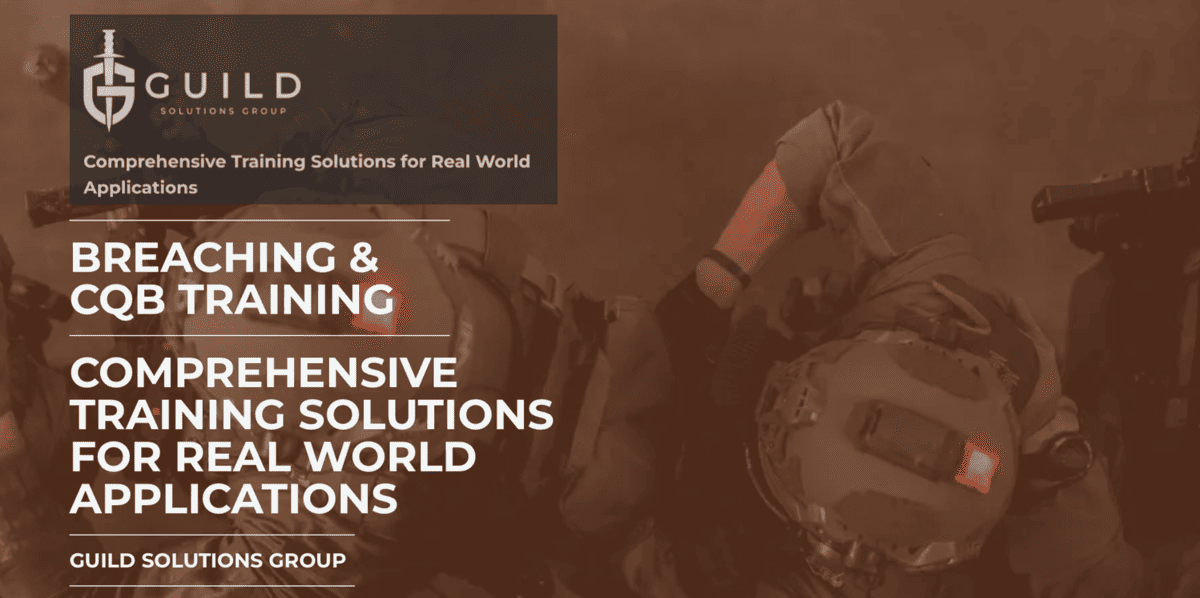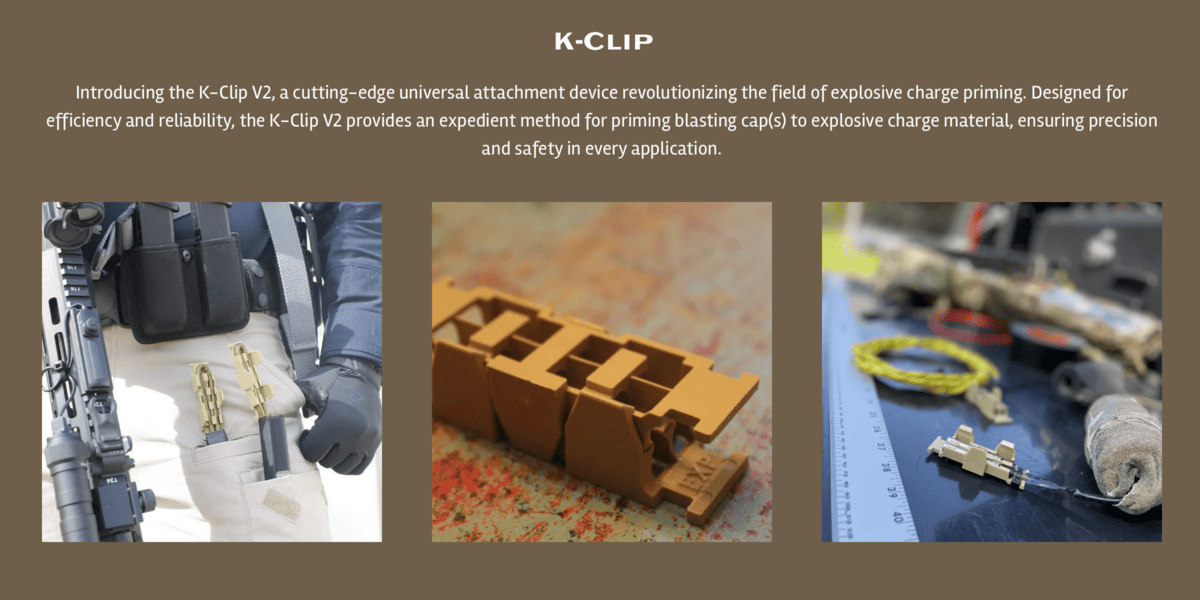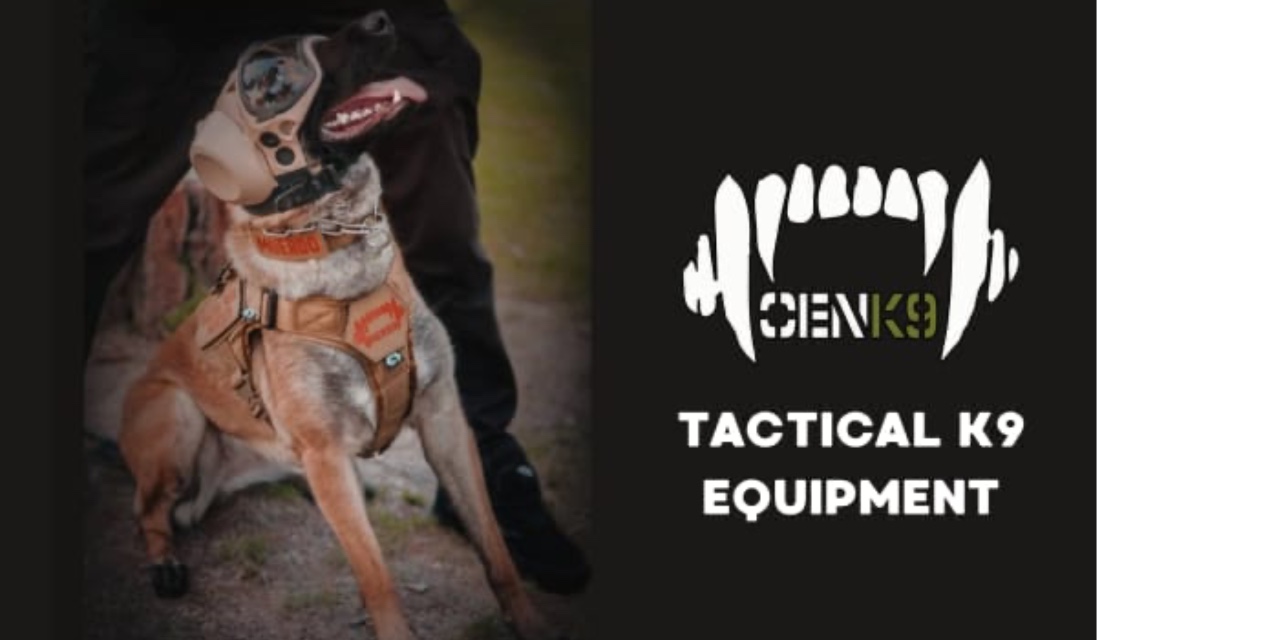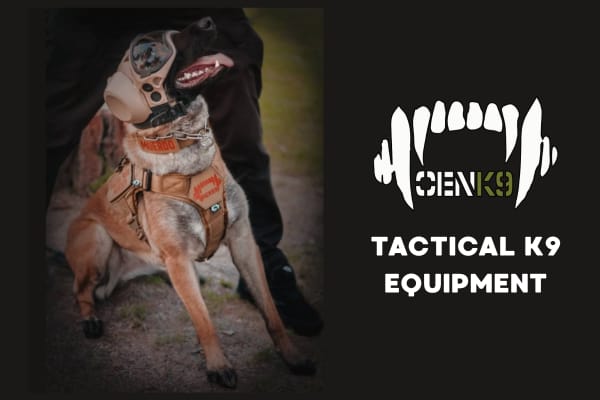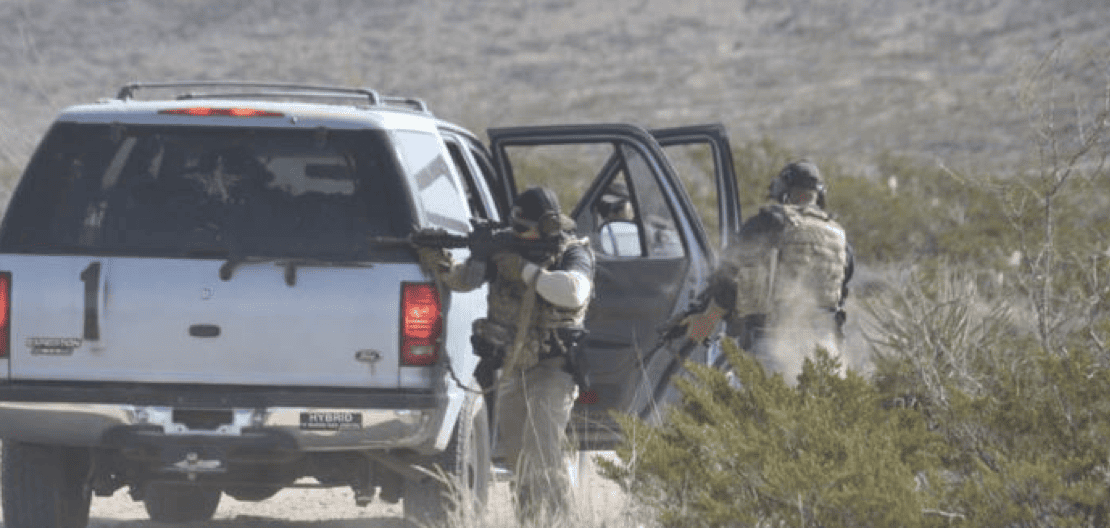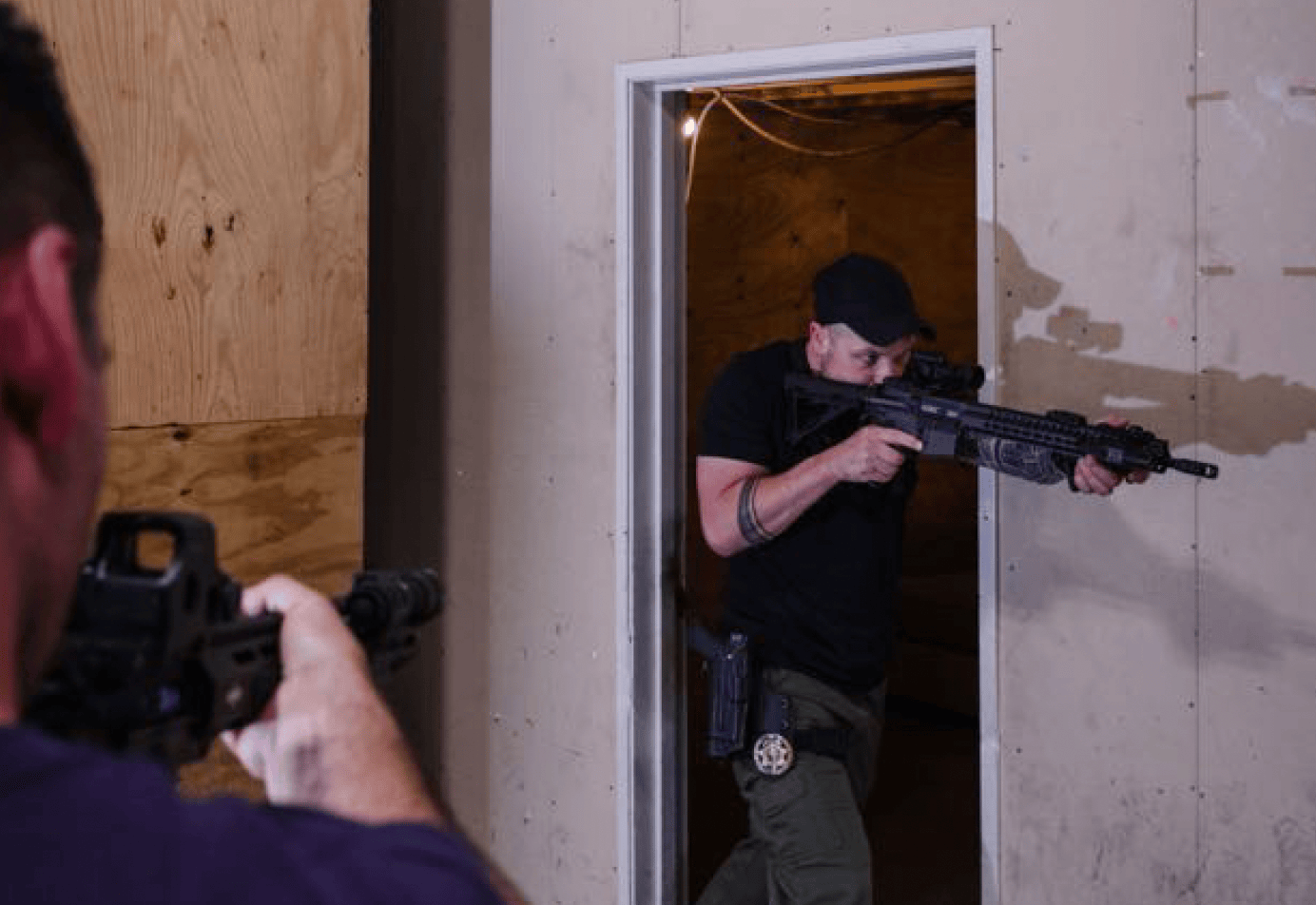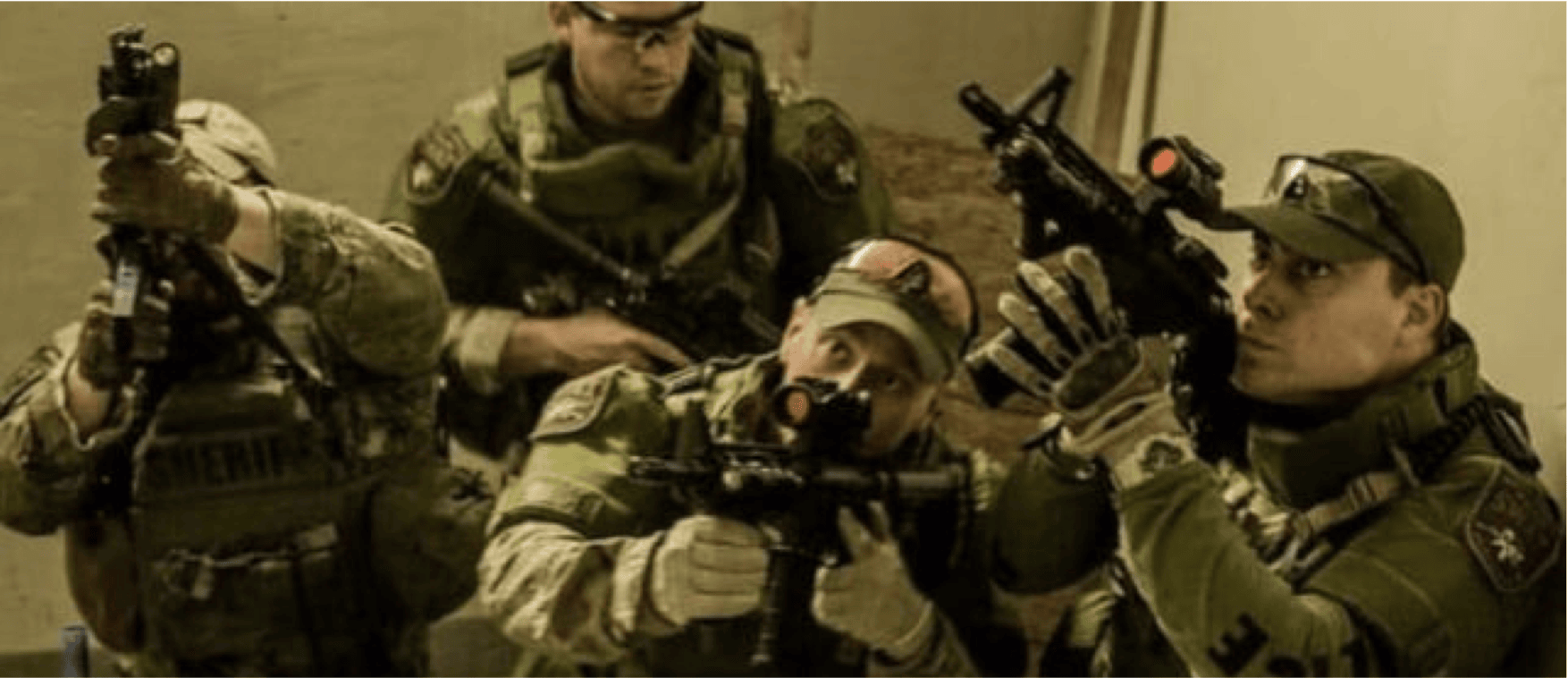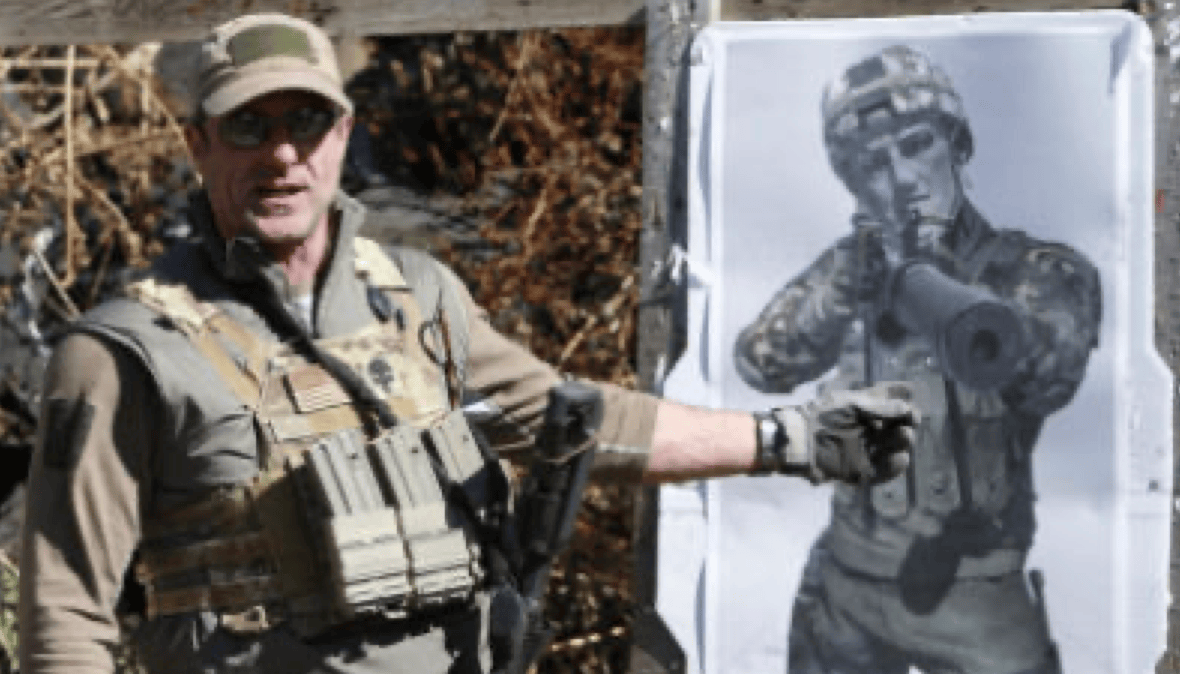
Thomas Lojek
Garrick Fernbaugh: Targets for the Evolution of Tactical Training
About Garrick Fernbaugh
• US Navy, 1988-2008. West coast SEAL teams, teams Three, Five and Naval Special Warfare Center (NAVSPECWARCEN) 3rd phase SEAL Instructor.
• CIA / GRS – 2008 – 2015.
• Red Frog 2015 – 2020 – I provided tactical training, small unit tactics and firearms training for military, law enforcement and civilians.
• High Value Target LLC – 2020 to present.
Official Sponsors
Image Processing Training (IPT) allows us to take advantage of what the disciplined and controlled mind does naturally during life threatening moments.
What I’m doing with the HVT targets:
Link to the HVT Vimeo page with various video’s.
https://vimeo.com/user14973852
Colonel DAVE GROSSMAN contributes significantly to what I’m doing with the targets when he described in his book On Killing, a study that was conducted post WWII.
The study concluded that less than 10% of the troops had the capacity to actually aim and pull the trigger to kill another man. In an effort to change and improve these statistics the silhouette target was introduced as a solution to the troops trained during boot camp and prior to deploying to Vietnam.
The study was conducted again post Vietnam and concluded that the statistics had basically reversed themselves, so the silhouette target was indeed successful at teaching the troops to become more effective at killing.
However, today most military, law enforcement and civilians are still training on a silhouette target.
The fact is, the evolution of tactical training essentially stopped post Vietnam.
I’m changing that.
What I’m doing with targets is the evolution of tactical training.
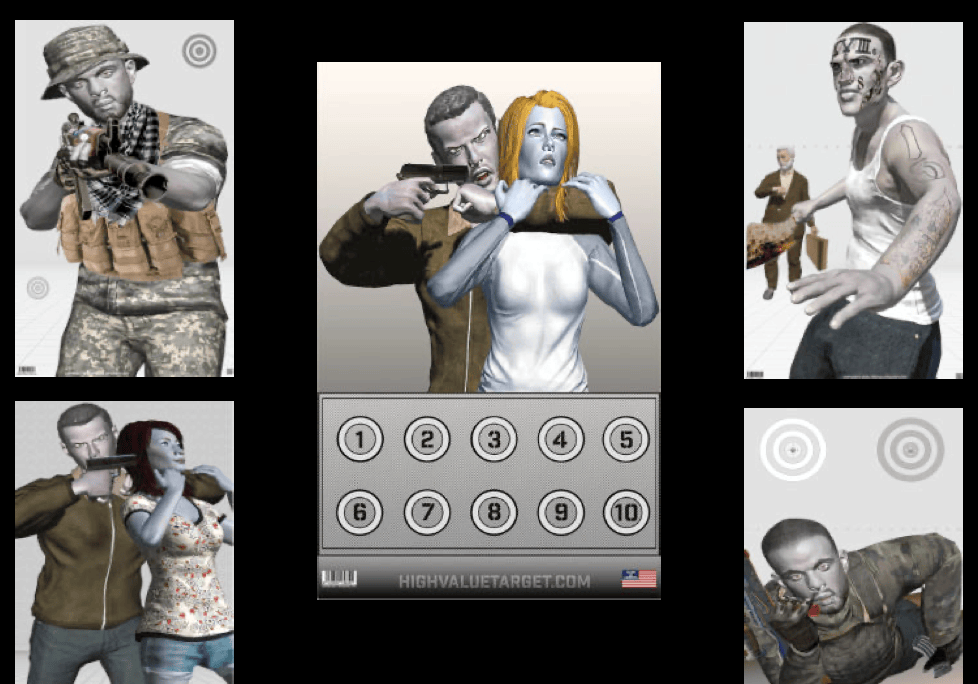
In my opinion, changing magazines faster, acquiring sight pictures faster is not a fundamental evolution in tactical training, but this is.
I’ve developed a training methodology that I refer to as Image Processing Training (IPT).
The term image processing is taken from neuroscientists at MIT who conducted a study to determine how fast humans can understand what they are seeing.
Images of situations were flashed before the participants of the study at various speeds, the study concluded that humans are capable of processing images in as little as 13 thousandths of a second.
No studies could be found that suggest the possibility of even faster processing speeds with the introduction endorphins commonly released during life threatening experiences and fight or flight.
My formal training as a military instructor and Master Training Specialist
During the 5 years (2015 – 2020) I was running my own training and in doing so I reviewed the materials and course books related to my formal training as a military instructor and Master Training Specialist.
This formal education taught me how to be much more than a SEAL instructor, and to develop from the ground up a formal training program, implement it and maintain it.
During this time, I re-thought everything we do as shooters and why we do it.
For example, when we enter a room (clearing) what do we see?
Not silhouette targets, we see people standing in various positions.
The situation is normally dynamic, fluid and moving.
The threat, so to speak, is rarely standing there squared off as depicted on most targets, so I depict the body in motion on nearly every target; Targets that represent the threat, is one of my phrases.
Body position changes with the type of weapon being held, such as pistol or rifle.
I got started taking pictures of mannequins in various positions, then using photoshop I would include images of guns.
The images of the mannequins are in fact more realistic than silhouette targets and therefore better.
However, in the interest of developing a more professional product I went to work teaching myself how to use 3D animation software and a number of different programs that enabled me to produce the targets that I’m now making.
Most of the training I went through in the SEAL teams and CIA included standard silhouette targets.
Eventually, I realized that the targets me and my peer have been primarily training on restricted us from learning how to shoot a human body, better.
I was told probably 30 years ago, there are two places to shoot a human, the heart and the cerebellum of the brain.
This is not a new concept, but it’s never learned by most due to the targets, or it’s quickly forgotten because it isn’t reinforced through repetition during training.
In re-thinking virtually everything we do as shooters I examined every shooting drill I’ve ever done and established whether or not it’s still relevant.
One of favorite shooting drills was the Mozambique, two to the body, one to the head.
Good chance that every Spec Ops guy has trained this drill.
However, I had never done this for real and couldn’t think of anyone that had, I began making phone calls.
That was a few years ago now and to date I still haven’t found anyone that has done the Mozambique for real.
It’s an interesting case study because it’s also the only example I know of that contradicts the axiom; we are truly products of our training.
What I’ve concluded is that in the heat of the moment the shooter, any shooter and every shooter will acquire a sight picture, maintain that sight picture and continue pressing the trigger until mentally that shooter believes the threat to be eliminated.
So, the first sight picture is crucial and better be the right one!
This is imperative when we are faced with threats that might be wearing a suicide bomber vest, Kevlar vest or a ballistic plate carrier.
There is also a certain psychology that accompanies the targets.
Imagine a target with flowers all over it, are flowers suitable aiming points much like a bullseye?
Yes, they are and imagine the mindset is the shooter training on a target full of flowers?
In another example, imagine a law enforcement agency training on a target that depicts a young black kid.
Would it be said, that agency is training to kill young black kids?
Probably, and in fact psychologically they would be.
High Value Target makes targets that are racially neutral, unbiased targets, which should be of particular interest to law enforcement agencies.
How Fast Can We Understand What We See?
Back in the middle 90’s, it was being preached by different shooting instructors that the human brain would take 1/4 of a second to understand what it was seeing.
Sometime after that it became commonly accepted that the human brain could understand what it is seeing, in just 100 milliseconds, that’s 4 times faster than previously thought which is just 1/10th of second.
One tenth of second, that’s fast.
However, the 2014 MIT study determined that humans can processing an image in just 13 thousandths of a second
(0.013).
Lightning fast.
That’s 7 times faster than the previous numbers of 100 milliseconds.
It makes one wonder, in the future, will science discover humans can process images even faster than 13 thousandths of a second?
If so, what mental processes and techniques may facilitate even faster processing speeds?
The MIT study did not consider the effects different hormones have upon being released during life & death situations, known scientifically as Acute Stress Response.
Some claim that the effects associated with the fight or flight response slow down our reaction times and physical abilities.
However, no studies could be found to corroborate those statements.
In fact, no studies could be found to indicate that reaction times or physical movements are effected one way or the other when we experience the hormones released during the fight or flight response.

Human Response and Reaction Times
There is very little, if any information regarding reaction times being diminished or enhanced by adrenaline.
However, it seems obvious that the hormones and biological response mechanisms associated with the fight or flight response have the potential to increase cognitive processing speed and physical reaction times when the mind has been properly conditioned.
Circa, 1993 the accepted time to process an image was 1/4 (0.25) of a second.
In 2014, MIT neuroscientists conducted an experiment intended to measure how fast humans can process images.
During the study, they would flash images of various scenes before the subjects for times between .80 milliseconds and just 0.013 of a second.
The scenes were simple, such as a man holding a briefcase in front of a building, or a family having a picnic by the lake.
The study determined that humans are capable of understanding what they are seeing in as little as 13 thousandths of a second, which is nearly 20 times faster than thought back in the 90’s!
Although, many are now aware of the 2014, MIT study, our training remains virtually unchanged to reflect the new data.
How fast can we move our eyes?
Video today is commonly recorded at 30- 60 frames per second and most experts agree that people cannot process faster than 30- 60 frames per second.
However, the 2014 MIT study suggests that it may be possible to see even faster.
In 2022, video game developers began making games, including virtual reality games, with a frame rate of at least 60 FPS.
Training Ourselves To See Faster
In recent years, across virtually every sport, there has been an increasing emphasis on training the eyes to see faster.
This may entail seeing a high-speed pitch, a soccer ball, or moving the eyes to the next target to be engaged.
A baseball batter has 4 tenths of a second to decide, is the pitch a strike, curve ball, or slow ball?
Training that that mimics the thought processes and movements required during the actual event is invaluable.
For example, baseball batters are known to spend a lot of time in the batting cage, practicing to hit balls that are as fast, or faster than the ones they’ll see during the game.
Tactical shooters should practice with targets that resemble what they are engaging.
In general, athletic speed is more valuable than power or strength and it’s harder to develop.
Developing speed in its many forms is methodical and scientific.
Those dedicated to becoming better shooters are known to train their eyes to lead the muzzle of the weapon.
They understand their eyes are much faster than their physical movements so, their eyes to move to the next target immediately after engaging the first one.
Initially, it feels awkward, but like many things you accustomed to it and the
benefits cannot be denied.
The big take-away in this paragraph is that they are training their eyes where to look.
There’s no better way to speed up a specific mental process than by practicing it.
When you do, you’re firing up the central nervous system quite similarly to how you would if you were naturally responding to a stimulus.
Repetitive training creates neural connections between your brain and your body.
The more you repetitively train desired thought processes and movements, the stronger the connections become.
This is hard target!
The analogy is, see where to shoot.
It’s impossible to train the learning objective see where to shoot on a silhouette target.
Anyone who has trained on silhouette targets is likely to lose the fight when faced with the threat depicted on this target.
The targets we train with should represent the threat we are training to defeat.
*Near peer.
“Frogman Tactical”, Jason Pike commented while training this target;
“Yeah what was interesting it’s every one of my shots went right above the rifle, I’m talking half inch or so and a couple of actually hit the rifle.
My brain symmetrically sized up the entire target and that I think that’s why if you go from hips to shoulder center that that’s where all my rounds went, so some of them were definitely on the rifle.
It was just so hard, if you naturally didn’t put rounds up above all the armor and everything like that.
So, that target is definitely a game changer and like I said, they’re all really good but you definitely did awesome on this new batch like that new box I sent I don’t know when you sent it but there’s a bunch of different new targets that got the shoot.
No shoot guy.
I put that one up my son was so used to shooting the one that had the gun.
He just started popping the no shoe gun and didn’t even think about that guy.
He still had his hand there but he didn’t have the gun so it’s a definitely good.”
These two targets were developed to train target discrimination skills.
The targets are training aides that facilitate learning objectives that are impossible to achieve on most other targets.
These two targets are virtually identical from the chest up.
Typically, during a training day in the shoot-house the shooters get accustomed to seeing the same targets all day.
Some instructors won’t include any no-shoot targets in the training, but supposing they do over the course of the training day they may take shortcuts in an effort to speed up shots on target.
That short cut entails not checking the hands (of the target).
If trainers place this target throughout the shoot-house it will force the shooter to examine the hands.
This is the description of a real-world attack and is the best example I’m aware of that illustrates the importance of
NOT TRAINING ON SILHOUETTE TARGETS!
On June 25th, 2013 at approximately 6:30AM two vehicles occupied by Haqqani Network operatives initiated an attack upon the Embassy Annex, CIA compound in Kabul, Afghanistan.
Two vehicles containing a total of 8 highly trained Haqqani Network operatives were involved in the attack.
The attackers were wearing US Army uniforms and carrying DoD ID cards.
In a well-rehearsed move, the 4 attackers simultaneously dismounted and killed 7 CIA guard force members in less than 3 seconds.
The attackers, now essentially trapped in the outer compound did not have access over the 20 ft high cement t-walls.
One of the attackers wearing a suicide bomber vest detonated himself at a pedestrian gate in an attempt to breach the gate, which held up to the blast.
Another attacker dressed in US army fatigues waited patiently for a different pedestrian gate to open.
Probably, assuming that eventually someone would open the gate, he would kill them and enter the inner-compound.
Among the first to respond to the attack were two Global Response Staff (GRS) officers, one a former army Special Forces soldier (call sign Minor) and the other a former Navy SEAL (call sign Pirate).
They encountered what appeared to be an active-duty US Army soldier in the compound, not convinced by the uniform the #1 man, Minor aimed in on the head of the unknown person.
The Haqqani Network operative stood canted to one side, effectively concealing the AK by his side.
In the fractions of seconds that followed the highly trained Haqqani Network operative presented his AK and fired two rounds, impacting Minor’s ballistic plates.
Minor, absorbed the shock and impact of being struck twice squarely on the plates.
He maintained sight picture and pressed the trigger, the first round penetrated the cerebellum of the brain.
Minor, stated later the body fell so fast that all the subsequent rounds fired went over the top of the falling body.
We are truly products of our training.
Imagine, the intensity of the moment, the stare-down that occurred for a moment and the proficiency level of the terrorist who brought his AK up and accurately placed two rounds at 25 yards squarely onto Minor’s plates before Minor could respond; he already had a sight picture on his head!
The crucial lesson to be learned from this incident is the fact that the Haqqani Network operative could plainly SEE that the #1 man was wearing a ballistic plate-carrier.
In that moment, the terrorist operative responded with very little conscious thought, he was truly a product of his training.
Go time, the signal traveled the well-developed neural pathway that had been developed through repetition, similarly to programming a computer.
Neuroscientists often say, neurons that fire together wire together.
So, given the situation like Pavlov’s dog, stimulus/ response when the stimulus was given the response is nearly involuntary.
The shooter will respond to the stimulus according to the programming.
The Haqqani operative demonstrated that he was truly a product of his training.
The Haqqani Network operative, although well trained and highly proficient was a victim of an inferior training program.
He lost.
Real world situations like this clearly show that instinctively firing center mass is inferior to Image Processing Training™.
These are the real ramifications of not updating your training system.
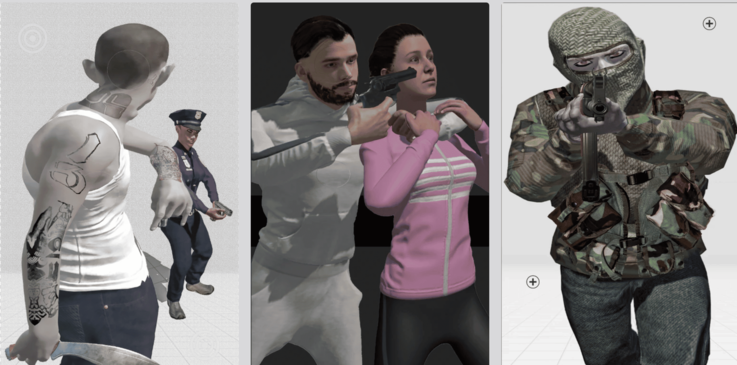
The targets we used made it virtually impossible to apply what he was saying
Hebb’s law, proposed by the neuropsychologist Donald Hebb, simply states that synaptic connections that fire together, wire together.
In applying Hebb’s law to processing images, the concept is to program yourself through repetition to think of the human body 3 dimensionally with the intent of locating the heart, or the cerebellum of the brain.
An instructor of mine told me on the range 30+ years ago there are two places on the human body to aim, both are the about the size of a fist.
To effectively engage the heart or the cerebellum of the brain we need to think 3 dimensionally and how the bullet will pass through the body.
This sounded like good advice, and everyone nodded in agreement as he made his points.
But the targets we used made it virtually impossible to apply what he was saying and so the information essentially went in one ear and out the other.
To implement what he was describing we should have put it into practice right then and there and begun practicing thinking 3 dimensionally while we were there for that week.
However, in order to practice thinking 3 dimensionally we needed targets that facilitated that type thinking and depicted images of people at various angles.
Bodies depicted at different angles on the targets are important so we can practice thinking 3 dimensionally about how to penetrate the heart or the cerebellum of the brain.
Tachypsychia And Image Processing Training
Tachypsychia describes the phenomena of time slowing down and is recognized as a neurological condition that distorts our perception of time.
This phenomenon is commonly brought on during life-threatening moments and associated with the biological responses of the body.
Many describe tachypsychia as the appearance that time is elongated, or that events are moving slower than reality.
The tachypsychia symptoms include:
Increased heart rate and blood pressure which may even cause fainting.
Dilation of bronchial passages, which causes a higher absorption of oxygen into the blood stream.
Dilation of the pupils which allows more light into the eye, enhancing low light vision, however possibly resulting in tunnel vision.
Auditory exclusion due to being extremely focused upon (something).
An increase in pain tolerance due to being extremely focused upon (something).
Loss of color vision due to the rods in the eyes becoming overly activated at the same time the signals to the cones in the eyes are diminished, resulting in B&W vision.
Short term memory loss, however increased long term memory.
Decreased fine motor skills, due to an influx of information.
Decreased communication skills
Decreased coordination
A release of glucose into our system generating extra energy and strength.
The research reviewed during the writing of this book found no studies that indicated that the release of epinephrin during Acute Stress Response is responsible for creating the condition of tachypsychia.
In other words, just because your body has released tons of hormones does not automatically mean you will experience the phenomena of tachypsychia.
Epinephrine, also known as adrenaline, is both a neurotransmitter that is part of the bodies sympathetic nervous system and the body’s emergency response system.
Epinephrine has been shown in studies to play a role in nattention, focus, panic and excitement.
What explanations exist for the slow-motion effect referred to tachypsychia?
Obviously, physical time does not slow down.
It is our perception that has changed.
One explanation for our change in perception is that the internal processes of the brain run faster in situations of “fight or flight.”
Bolstering that point, epinephrin is known to cause synapse’s in the brain to require less electrical impulse to fire.
The purpose of such mental acceleration is clear, when we processes environmental stimuli faster than usual, it enables one to respond more readily.
Perceiving, thinking, and acting faster amounts to a survival advantage.
However, if the release of epinephrin allows the synapse’s of the brain to fire faster and with less electrical impulse, could this result in information overload for the unfocused mind?
Interestingly, the symptoms associated with fight or flight and panic attacks are quite similar.
Many tachypsychia theories were examined during the writing of this book.
However, not all theories came to the same conclusion, one thing most theories acknowledge is a change in consciousness and thus, a change in perception.
Studies showed that not everyone has the same perception of the same experience.
In other words, two people experiencing the same life-threatening event may have two fairly different experiences.
Studies have shown the hormones released are not (themselves) responsible for the phenomenon of tachypsychia.
So it would seem a combination of hormones being released in addition to mental processes bring about a change in perception for one individual, but not necessarily another.
Like Frames of A Video
Tests have shown we can dissect the real-life video stream, processing each frame, even if it’s done subconsciously.
One explanation for tachypsychia is that during life threatening moments our focus and attention have increased substantially.
When this change in focus and attention are combined with the release of hormones during fight or flight we experience a change in perception and begin processing the situation unfolding around us like individual frames of video.
That theory is based upon the (2014) MIT study that show’s humans can process images at 13 milliseconds per image, which validates that we can see and discern data at speeds up to 72 frames per second.
This data blows the roof off of the previous data showing our visual processing speed topped out at 100 milliseconds.
This knowledge is a significant game changer in terms of how we might apply it towards tactical training.
Training to process images on targets is training to capitalize upon the physiological responses that naturally occur during fight or flight.
As our attention and focus exponentially increases upon the situation our perception of time may change as well.
Historically, many have claimed the bodies release of epinephrin and other hormones during the fight or flight response are detrimental to performance.
What of those people who claim the hormones released actually facilitated a better response, such as faster cognitive processing?
Assuming the Creator made no mistakes, what if our bodies natural response is detrimental to those who haven’t learned how to control it and advantageous to those who can?
(Author) Speaking for myself, I’ve experienced huge adrenaline rushes my entire life.
When I was in my teens I found the adrenaline rushes to be overwhelming and they made me dizzy and nauseous.
However, when I entered BUD/S training to become a Navy SEAL I started practicing meditation.
What I found throughout my career in the SEAL teams was that adrenaline was advantageous.
In extreme situations the adrenaline provided substantially increased strength as well as mental clarity, which on one occasion lasted for day’s afterwards.
Studies show that if you are simply injected with epinephrin you will not necessarily experience tunnel vision or any of the other symptoms of Acute Stress Response.
Therefore, tunnel vision is not a result of the bodies release of hormones and must be related to thought processes that are occurring.
In fact, a panic attack is recognized to be a form of Acute Stress Response.
Tunnel vision is also recognized to be a sign of an anxiety disorder.
The symptoms of a Panic attack are quite similar to those of Acute Stress Response:
Sense of impending doom or danger
Fear of loss of control, or death
Rapid, pounding heart rate
Sweating
Trembling or shaking
Shortness of breath or tightness in your throat
Chills
Hot flashes
Nausea
Abdominal cramping
Chest pain
Headache
Dizziness, lightheadedness or faintness
Numbness or tingling sensation
Feeling of unreality or detachment
In summary, studies show that tunnel vision is not automatically brought on by the hormones released during fight or flight.
However, tunnel vision is connected to panic attacks and anxiety disorders.
Therefore, it would seem mental conditioning is the key to success and should be a crucial aspect of our training.
Image Processing Training (IPT) conditions the mind and creates neural pathways that did not previously exist.
IPT™ allows us to take advantage of what the disciplined and controlled mind does naturally during life threatening moments, which is begin to process images like individual frames of a film strip.
Basically, the effects of adrenaline may allow us to process images even faster than the 13 milliseconds determined by the MIT study.
Garrick Fernbaugh
HVT – President
highvaluetarget.com
